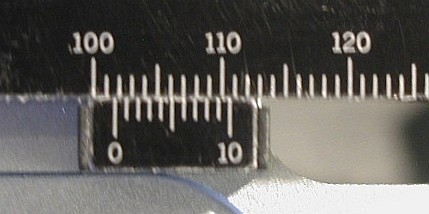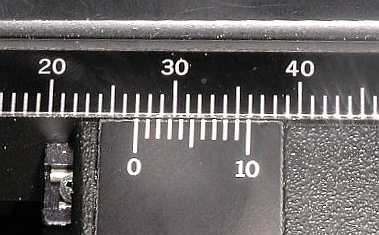Vernier Scales
A vernier scale (invented by the French mathematician Pierre Vernier) is a device which allows accurate interpolation of numbers on a fine scale. It consists of a primary or regular scale, and a sliding vernier scale marked such that 11 lines on the vernier scale equal 10 lines on the primary scale. By noting which of the lines on the vernier scale lines up with any line on the primary scale, the tenth of a unit on the primary scale can be read with accuracy. We use it in the biology lab to identify “addresses” of microscopic features such as classes of leukocytes so that the specific cells can be located in the future.
Procedure: Align the cell whose address you wish to record in the exact center of the field of view at the highest power convenient. Read the fore and aft scale (on the right of the microscope): the primary scale value just to the left of the vernier zero line is the whole number. The fraction of the whole number corresponds to the number on the vernier scale whose line lines up with any line on the primary scale. The vernier number is the decimal to be added to the primary whole number. Here are a few examples (the answers are at the bottom of the page):

1

2

3

4

5

6

7

8

9

10

11

12

13

14
1. 26.4
2. 161.0
3. 101.6
4. 108.6
5. 142.1
6. 42.5
7. 26.9
8. 37.0
9. 42.7
10. 125.9
11. 129.2
12. 37.0
13. 160.5
14. 28.9





